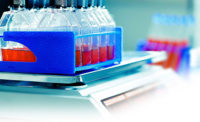The year 2007 is often non-affectionately referred to as “The Year of the Recall.” In 2007, there were a total of 23 recalls of USDA-regulated beef products for the presence of E. coli O157:H7, amounting to more than 35,000,000 pounds of beef products being recalled. Many of those recalls were triggered by large-scale outbreaks, which resulted in countless lawsuits and years of prolonged litigation.
At the time, the industry was still struggling with how to respond to a pathogen that was considered to be naturally occurring in cattle, inherent on farms and in feedlots, and nearly impossible (so, it seemed at the time) to control. Indeed, only a few years earlier, experts were proclaiming that trying to eliminate E. coli O157:H7 from the beef supply by adopting new regulatory requirements which were virtually impossible to satisfy would be like trying to eliminate airline crashes by having Congress repeal the laws of gravity. The objective of a near O157:H7-free beef supply, many argued, would be too costly and too impossible to achieve.
Fast-forward nearly 15 years to 2021, which was witness to only two recalls for E. coli O 157:H7. When looking at least year’s data, and each of the years since about 2012, it would appear that the beef industry has learned to effectively control E. coli O157:H7 in finished products. These accomplishments were the result of more careful dressing procedures, additional interventions, and the diversion of larger volumes of product when E. coli O157:H7 positives were encountered during production. The “seemingly” impossible was, thus, not actually impossible.
With E. coli O157:H7 now handily under control, Salmonella now accounts for a growing number of foodborne illnesses in U.S. consumers. Whether those illnesses result from poultry products (often the most likely culprit), raw ground beef products, or other non-animal products (such as nut butters, spices and produce), the stark reality is that Salmonella in the food supply is not an issue that will be going away soon. Thus, as it relates to raw animal products, we predict that, in the coming months and years, FSIS will begin to tighten the standards and issue new regulatory requirements designed to further control Salmonella in the meat and poultry supply.
As we move further into 2022, the industry should continue to do an amazing job processing and shipping the safest beef products the world. But beware, it may not be long before we have a new, seemingly impossible task to overcome. With O157:H7 in the rear-view mirror, Salmonella appears well-positioned to become FSIS’ next target.










